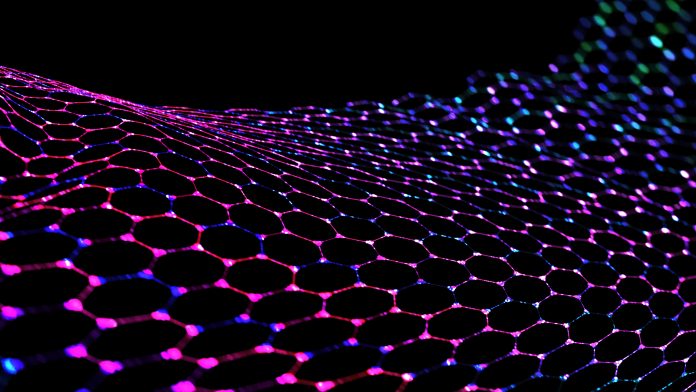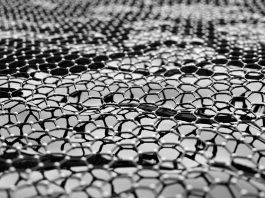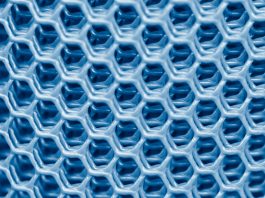Researchers from the University of Bath have nanoengineered a network of 2D materials to create nanomesh and are observing the energy landscapes at the intersection of the materials.
In 1884, Edwin Abbot wrote a novel called Flatland, in which he envisioned a world that existed only in two dimensions, where the beings are 2D geometric figures. Interestingly, the physics of this literary world is – to some extent – parallel to that of modern 2D materials such as graphene.
2D materials comprise of single-atom layers, whereby electrons travel in two dimensions but their motion in the third dimension is limited. As a result of this ‘squeeze,’ 2D materials have improved optical and electronic properties that demonstrate great potential as next-generation ultrathin devices with a wide range of applications including communications, energy, imaging, and quantum computers.
Generally, 2D materials are envisioned in flat-lying arrangements. Unfortunately, the strength of these materials – their thinness – is also a weakness. Consequently, when they are lit up, light can interact with them only over a tiny thickness, thus restricting their effectiveness. In order to overcome this weakness, scientists are searching for new ways to fold the 2D materials into complex 3D shapes.
In our 3D universe, 2D materials can be organised on top of each other; to employ the Flatland metaphor, this composition would symbolise parallel universes populated by beings who never meet.
Researchers at the Department of Physics at the University of Bath have discovered a method of arranging 2D sheets of tungsten disulfide (WS2) into a 3D configuration, resulting in an energy landscape that is greatly modified when contrasted with the flat-laying WS2 sheets.
This specific 3D composition is known as a ‘nanomesh’: a webbed network of densely-packed, randomly distributed stacks, containing twisted and/or fused WS2 sheets.
Once again extending the literary metaphor, alterations such as these would enable beings in the Flatland to visit each other’s universes.
“We didn’t set out to distress the inhabitants of Flatland,” commented lead researcher Professor Ventsislav Valev. “But because of the many defects that we nanoengineered in the 2D materials, these hypothetical inhabitants would find their world quite strange indeed.
“First, our WS2 sheets have finite dimensions with irregular edges, so their world would have a strangely shaped end. Also, some of the sulphur atoms have been replaced by oxygen, which would feel just wrong to any inhabitant. Most importantly, our sheets intersect and fuse together, and even twist on top of each other, which modifies the energy landscape of the materials. For the Flatlanders, such an effect would look like the laws of the universe had suddenly changed across their entire landscape.”
Dr Adelina Ilie, who created the novel material alongside her former PhD student Zichen Liu, said: “The modified energy landscape is a key point for our study. It is proof that assembling 2D materials into a 3D arrangement does not just result in ‘thicker’ 2D materials – it produces entirely new materials. Our nanomesh is technologically simple to produce, and it offers tuneable material properties to meet the demands of future applications.”
Professor Valev explained: “The nanomesh has very strong nonlinear optical properties – it efficiently converts one laser colour into another over a broad palette of colours. Our next goal is to use it on Si waveguides for developing quantum optical communications.”
Another one of the researcher, PhD student Alexander Murphy, added: “In order to reveal the modified energy landscape, we devised new characterisation methods and I look forward to applying these to other materials. Who knows what else we could discover?”









